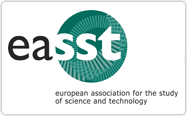Constructing ‘Do-Able’ Dissertations in Collaborative Research
Alignment Work and Distinction in Experimental High-Energy Physics Settings
DOI:
https://doi.org/10.23987/sts.109709Abstract
Many young scientists are trained in research groups, yet little is known about how individual doctoral dissertations are carved out of collaborative research projects. This question is particularly pronounced in high-energy physics, where thousands of physicists share an experiment’s apparatus, data, and the authorship of publications. Based on qualitative interviews with researchers working at CERN’s Large Hadron Collider, this paper analyses what makes a PhD dissertation ‘doable’ in this context. Describing the levels of work organisation, the challenges, and the actors involved in constructing ‘doable’ dissertations in collaborative research, I argue that doctoral dissertations are the emergent product of alignment work performed throughout the PhD. Individualisation is achieved by temporally, qualitatively and formally distinguishing dissertations from work on collective publications. I discuss how these processes shape the roles of students and advisors, and the content and value of dissertations in collaborative research.
Downloads
Published
Versions
- 2022-12-15 (2)
- 2022-02-28 (1)
Issue
Section
License
Copyright (c) 2022 Helene Sorgner

This work is licensed under a Creative Commons Attribution 4.0 International License.





